
|   |

|   |
An experience to watch - Dr. M. Surya Prasad e-mail: drmsuryaprasad@gmail.com January 25, 2019 Mridangist V.R. Chandrasekhar held a five day music and dance festival under his VRC Academy of Music and Dance at ADA Rangamandira and Seva Sadan, Bangalore, with success. 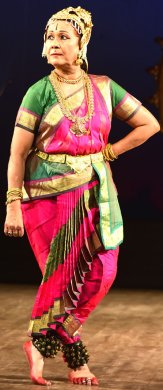 Usha Datar Veteran exponent of varied classical dances, guru and choreographer Usha Datar belied her age and enthralled the audience with her authentic presentation of Bhama Kalapam also known as Nava Janardhana Parijatha (Perini Sathyabhama), one of the great master pieces of Toorpu Bhagavatha tradition of Kuchipudi natya. She could see herself as the dancer deep down inside. The drama ran between Bhama, her sakhi Madhavi and Krishna. The live music support and the traditional costumes measured up to the tradition. It was an experience to watch her. I don't think your inner dancer can ever really fully die once it has had the chance to soar as it does as you move across a stage. Thanks to Guru Usha Datar for sharing her creativity through dance. Her performance showed that she is technically superb; her account of nritta was highly charged with passionate and deeply emotional abhinaya. She could capture to perfection the enormous mood swings and rhythmic dynamic range. 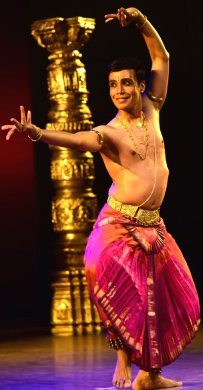 Seshadri Iyengar Blessed with having Guru Padmini Ravi, an outstanding dancer, choreographer (alas, she is seen very less on the stage) and inundated with brilliant ideas and artistry as his mentor, Dr. Seshadri Iyengar demonstrated his ability to render Bharatanatyam with deep understanding. Unequivocally, his exposition of the Kharaharapriya varnam (Moham aaginen) was of great panache and perception. The dancer was repeatedly greeted for his nrithya, nritta and abhinaya accomplishments. The famous devaranama Jagadodharana was enacted with refined artistry. The Vamana and Narashimha avataras were sketched in the glorification of Krishna Leelas. Seshadri's energy and tandava movements in the portrayal of Lord Shiva on the basis of Chandrasekharam bhajami satatam (Chandrakauns) were vibrant. The swaras were handy in creating a complex nritta network. 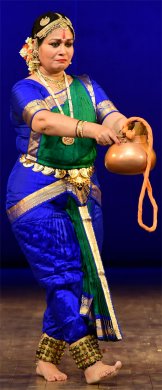 Seetha Kote Multi-faceted artiste Seetha Kote's unfolding of Sri Purandaradasa's life history and achievements as a revered saint-composer was a visual delight. Though it was eka aharya, her usage of properties like tanpura, Gopala butti, chitikais etc, created the required mood, ambience and atmosphere to cherish the narthana-keerthana. The juxtaposition of the adavus, swaras and sollukattus and its execution was one of the technical requirements that she dealt with aplomb and artistry. Her abhinaya was rightly based on a thorough and neat satwikaabhinaya. The detailed sketching of Purandaradasa's story became more authentic and interesting as it was based on his own compositions. Thus many of his rare and touching Devaranamas were heard with great interest. They also boosted the mood and movements of the dance drama. Even the Pillari Geethas of the saint-composer were used meaningfully. The excerpts of his songs were interpreted artistically. While doing so, Krishna's beauty, deeds and love were portrayed in an intimate manner. The dance drama covered all the subtleties and niceties of Bharatanatyam's nritta, nrithya and abhinaya. Karthik Hebbar's music was exemplary. 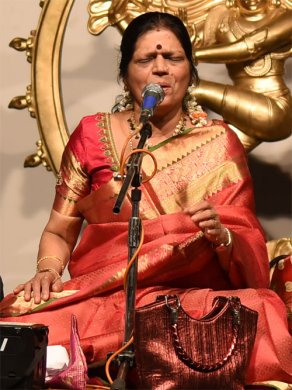 R.A. Ramamani The four day festival concluded with a scholarly vocal recital by versatile vocalist R.A. Ramamani. Poorvi Kalyani varnam in different speeds, elaboration of Gajananayutham (Vegavahini)) in the form of detailed and delightful alapana and swaras and Enthamuddo (Bindumalini) featured in the early part of the recital enthralled the audience. Renowned mridangist TAS Mani was felicitated on the occasion. 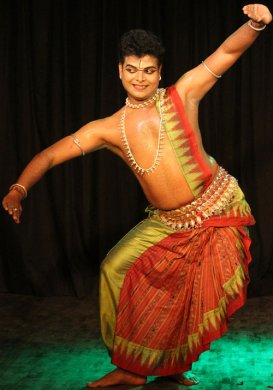 Lucky Prajna Mohanty Young dancer Lucky Prajna Mohanty stole the show with his typical Odissi dance features while performing for ICCR at Bharatiya Vidya Bhavan. He covered the entire stage with a resonating rhythm and struck attractive freezes. He did well in dealing with the ragamalika Mangalacharan and the connected Bhoomi pranam, trikhandi pranam etc. The elaboration of Mukhari triputatala was a class by itself. His graceful and power packed rendition of bols was marked by vivid and varied laya, charis accounting for excellent nritta. The depiction of Mother Yashoda trying to make a naughty child Krishna fall asleep by various methods including the threat of being lifted away by a thief on the basis of a Mishra Kafi Oriya poem established an intimate rapport with the audience. The ashtapadi Yahi Madhava was beautifully explored by Lucky Prajna wherein Krishna tries to pacify Radha to come out of her allegations of dallying with another woman. The spiritual tint underlying the ektali Moksha glowed in the concluding item of Lucky's Odissi recital. The bols were neatly done.  Prajwala K. Hande It was time for celebration for Guru Suparna Venkatesh and her theater-activist husband Sai Venkatesh when their disciple Prajwala K. Hande did them proud by presenting a delightful Bharatanatyam recital at JSS auditorium. Dr. Suparna has every reason to be proud of the fact that it was her 25th rangapravesha presentation. Prajwala created a web of rhythmic patterns while remarkably negotiating with all the demanding jathis with ease and comfort. Shwetha Venkatesh, daughter-disciple of Suparna Venkatesh and herself an accomplished dancer, was the commendable nattuvanar. Karthik Hebbar (vocal), Sri Hari (mridangam), Pradesh Acharya (violin), Vivek Krishna (flute) and Karthik Datar (rhythms) were the other members of the successful orchestra. The challenging Mallari (Nata) and the annexed intricate laya patterns were neatly translated into the Bharatanatyam vocabulary. Dancing with a lot of confidence and conviction, she praised the dancing Vinayaka in her nimble abhinaya. The ragamalika shabdam on Lord Subrahmanya was a happy augury for the ensuing dance treat. On the basis of an Andolika krithi Ananda Roopini she drew an enticing picture of the Goddess of Learning. Flautist Mahesh Swamy's Kannada varnam Baarai Raghuvamsha chandrane (Ramapriya raga, adi tala) was the central piece of the recital. Prajwala demonstrated her bewitching balance and hold over laya and executed intricate rhythmic designs in the nritta segment. The tragic plight of Seetha in the Ashoka vana and her prayer for the return of Lord Rama were graphically highlighted by the dancer. The nrithya, nritta and abhinaya were artistically handled. Dr. M. Surya Prasad is a tri-lingual music and dance critic of Karnataka, scholar, organizer, educationist, researcher and translator. |